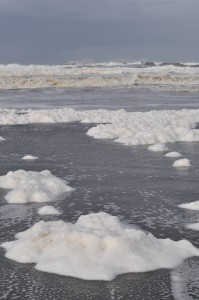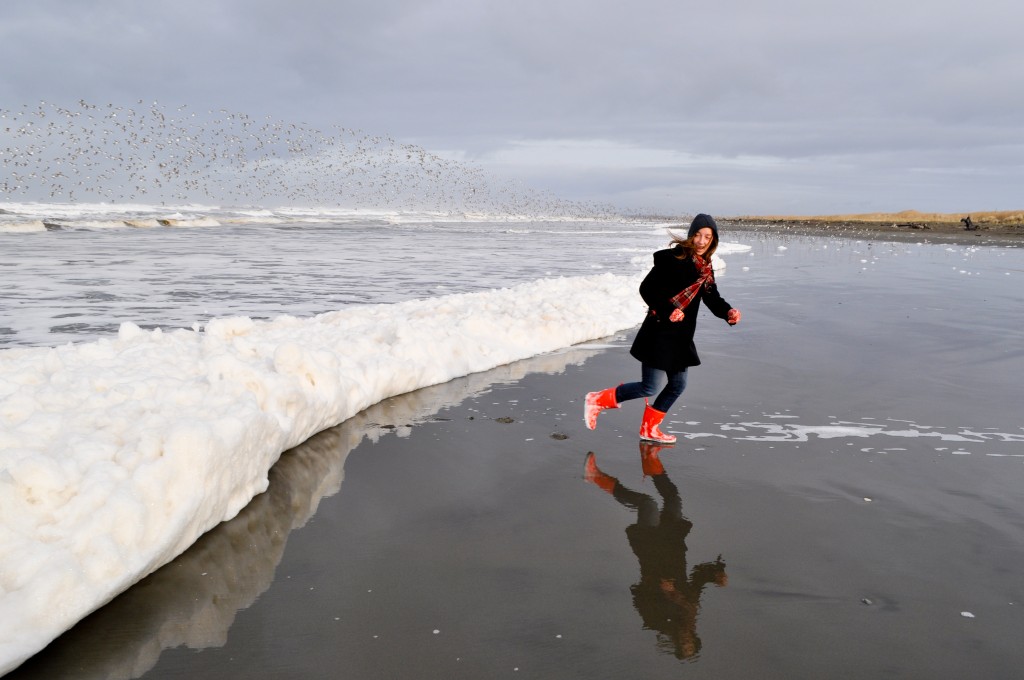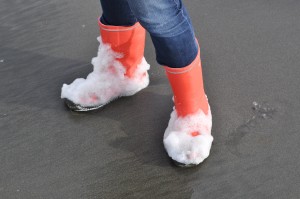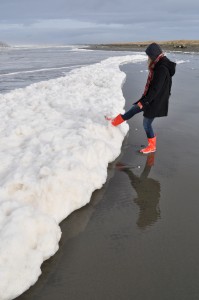Sea foam is a lot like the stuff that use to build up in my hot tub when I was a kid.
Whenever my parents neglected to add chlorine, for a few days (or a few weeks), tiny yellow bubbles would collect around the edges. My sister and I loved it. We thought we had a bubble bath in our spa. I remember coating my face and chest with it, pretending I was Sasquatch before “shaving” it off with my finger.
 I had no idea what caused the delightful foam, although I vaguely remember my dad scowling whenever we shouted, “Look, I’m a mummy!”
I had no idea what caused the delightful foam, although I vaguely remember my dad scowling whenever we shouted, “Look, I’m a mummy!”
So you can imagine my excitement when we visited Ocean Shores on Washington State’s outer coast this weekend and discovered heaping piles of sea foam.
Sea foam comes about when dissolved organic matter – such as the broken down algae blooms – occur off shore. During a storm, the stuff gets stirred up, and surface tension causes the particles to stick together and trap air. Then, all it needs is a strong wind to blow it ashore. In our case, 50 MPH gusts were ripping across the water, sending collections of foam scooting up the beach.
It’s important to note, that algae blooms may be natural, or caused by pollutants, so it’s a good idea to keep sea foam away from your skin. Since we were pretty far from civilization, we felt safe spending hours stomping, kicking and chasing ice berg-like mounds crowding the edge of the surf.
Sometimes foam would stack up knee-deep, and other times it would split apart like a fast melting glacier. If you stomped on a glob, it would disintegrate like you had just squashed a pile of whipped cream.
If I had known that dissolved dead skin was probably the cause my jacuzzi spume, I probably wouldn’t have been so excited to spread it on my face, but I cannot tell you how tempted I was to roll around on the beach shouting, “Look, I’m a snowman!”


